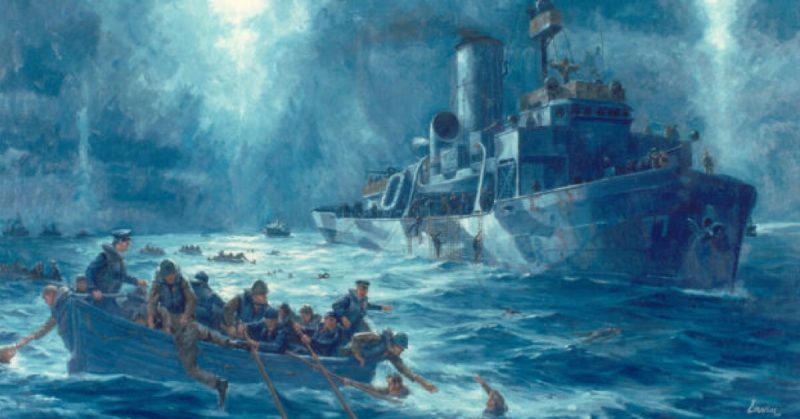The Rescue of the Dorchester
USCGC Escanaba was steaming along calmly on February 2, 1943. She was part of a six-ship convoy; three escorts, and three troop transporters. They were taking the transporters to Greenland, to be refitted and then onward to English ports. The men on board were more concerned with the freezing weather than the U-boats which may appear at any moment and attack.
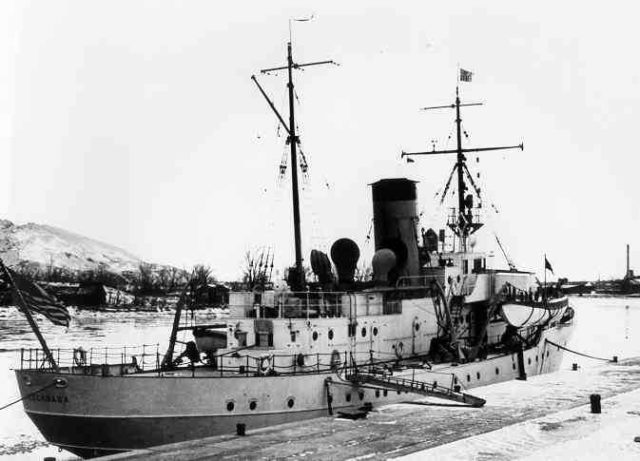
The Escanaba had been in service since 1931, mostly performing ice patrols, and support for local merchant craft. When war broke out in December 1941, she was put on the Greenland Patrol, and tasked with protecting convoys on their way to England and Europe. The route was fraught with dangers. German submarines were harassing Allied shipping and could appear almost out of nowhere to strike a convoy.
Escanaba’s crew had already encountered these hidden threats, having sunk two in the past year. Every encounter was a risk, and the sonarmen, radar-men, and watchmen kept a constant vigil, hoping to catch some hint of an enemy submarine before it was too late.
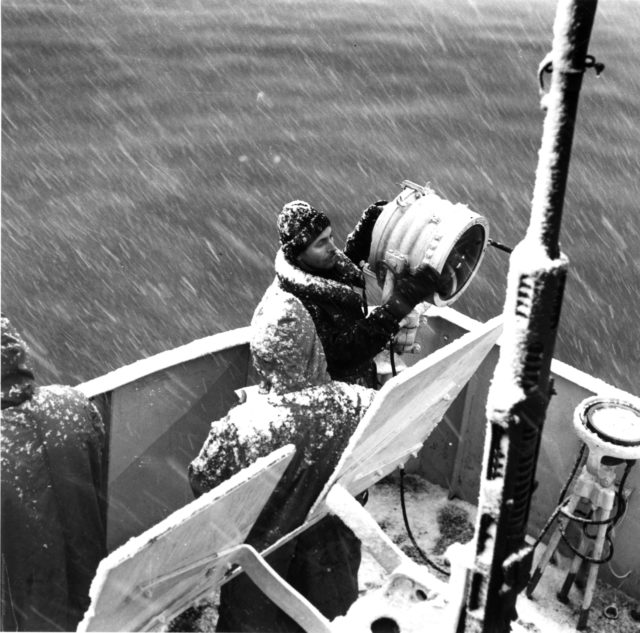
Around midnight on February 2, 1943, a call went out to the convoy; a submarine had been picked up on sonar. It was difficult to get a fix on the submarine’s position, and spotting a periscope in the rough seas was impossible. Suddenly an enormous white flash erupted from SS Dorchester, one of the Army troop transporters. A torpedo had stricken her.
Her lights were flashing randomly, as freezing water rushed in and crippled her electrical system. The ship groaned and creaked and began slipping below the waves.
Onboard, 904 men struggled for their lives, many far below decks, sleeping near the warmth of the engines. They scrambled to the upper levels. Desperate to escape the sinking ship, they jumped into the freezing water.
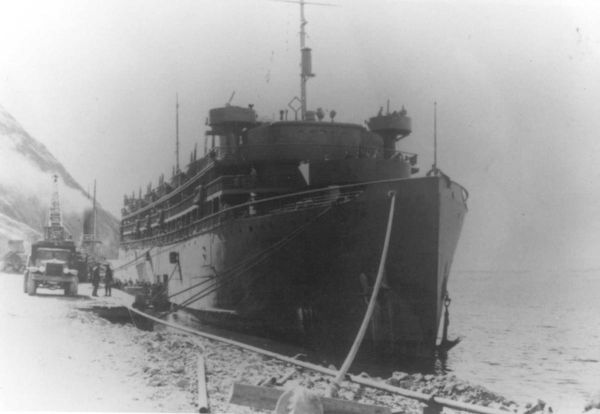
One of the other escort ships searched for the submarine, while Escanaba sped towards Dorchester to reach the survivors. Below deck, men prepared lines, nets, life rings and sea ladders. They were about to employ a brand new tactic: rescue swimmers. Men in rubber suits, tethered to the ship, would pull hypothermic, wounded or paralyzed, survivors from the ocean, get a line around them, and then they would be hoisted aboard the cutter.
On deck everything was pitch black, they could not allow any illumination, as it would destroy any night vision the men might have. That morning was overcast and moonless, and the black oil-covered sea made it almost impossible to spot survivors, although the oil slick did help calm the sea.
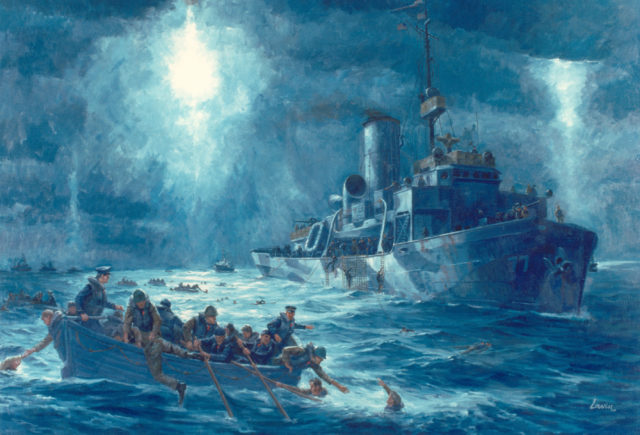
The cutter drifted towards a group of survivors, some floating in their life jackets, some clinging desperately to rafts, but almost all of them in severe shock and unable to move. The rescue swimmers began their task. The first man over the side was Ensign Richard A. Arrighi. The crew felt their spirits lift as they saw an officer leading his team, and the other retrievers followed.
They encountered a lifeboat, full of men so cold they could barely move. The lifeboat had picked up more people than it could hold, making her unstable. Escanaba’s crew knew how dangerous this situation could be, and quickly lashed her to the side of their cutter.
They were hauling the survivors to safety when one soldier slipped and fell between the wooden lifeboat and the steel ship. He disappeared down into the depths but bobbed back up in his life vest. His comrades grabbed for him, but he had come back up through the oil slick and was covered in the thick, slippery liquid. No one could get a hold of him, and hypothermia had already set in.
He only had a matter of minutes before shock would completely paralyze him. To make matters worse, his head was now directly between the cutter and boat. As the two hulls bobbed back and forth, he was nearly crushed between them.
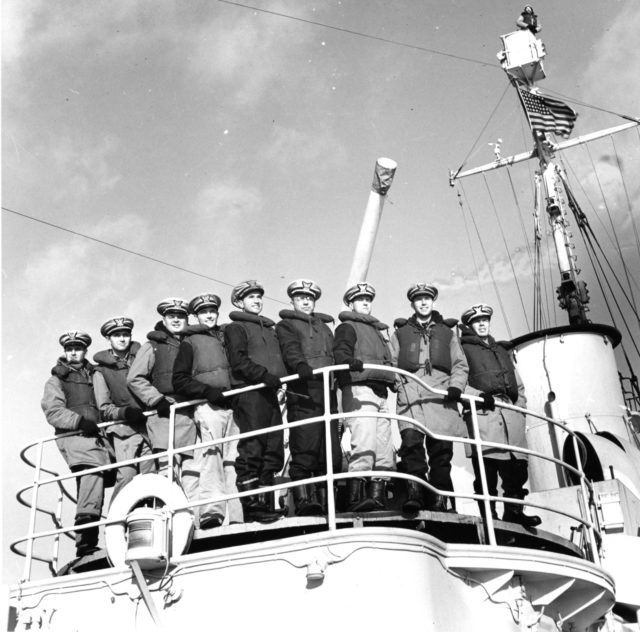
One man was close enough to help: Ensign Arrighi. Disregarding his own safety, he swam between the two bobbing hulls, grabbed the struggling survivor, and pulled him from the perilous situation. Finally, he got a rope around him, and he was hauled out of the oily, freezing seas to safety.
This was only one of 132 rescues made by the Escanaba’s crew that morning. Ensign Arrighi was awarded the Navy and Marine Corps Medal. The men proved their valor and dedication that morning.
The sinking of the Escanaba
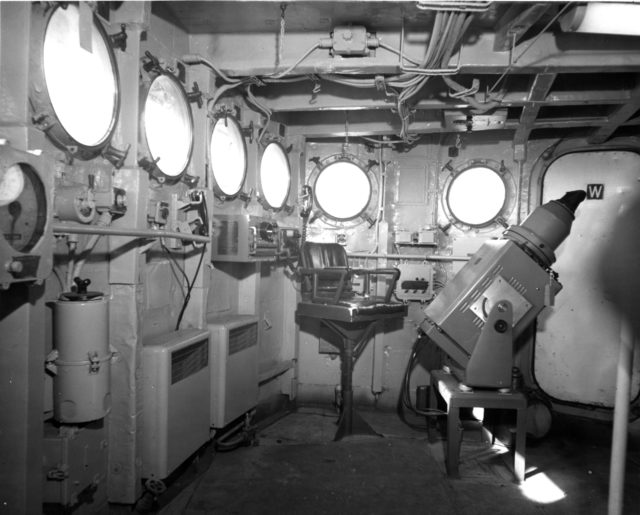
Over the next five months, Escanaba continued her escort patrols, but on June 13, 1943, everything changed. That morning, Seaman First Class Raymond O’Malley had taken the helm. Just after 0500, O’Malley said he heard what sounded like 20mm cannon fire and then suddenly he was thrown upwards in a massive explosion.
His grip on the wheel was the only thing preventing him from being thrown about like a ragdoll. He landed hard on the steel deck plates. As he regained his wits, he looked about and saw the entire bridge crew were wounded. O’Malley grabbed a life vest, and ran to the wings, or balconies, on either end of the bridge to assess the damage.
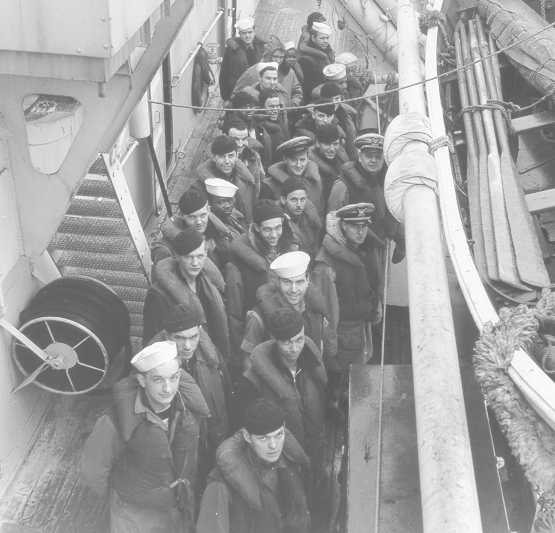
Once outside he saw the whole aft section of the ship had been torn to splinters and watched in horror as the main mast crumbled, then crashed into the Atlantic Ocean. The Coastguardsman saw the water creeping up towards him, as the small cutter slipped beneath the waves.
Thankfully, he was caught by a wave and carried away from the sinking ship.
One other man, Boatswain’s Mate 2nd Class Melvin Baldwin, was asleep in his bunk down below when he was thrown upwards by the explosion. Momentarily knocked unconscious, Baldwin regained his senses and stumbled out towards a ladder to go above. The ship was collapsing around him.
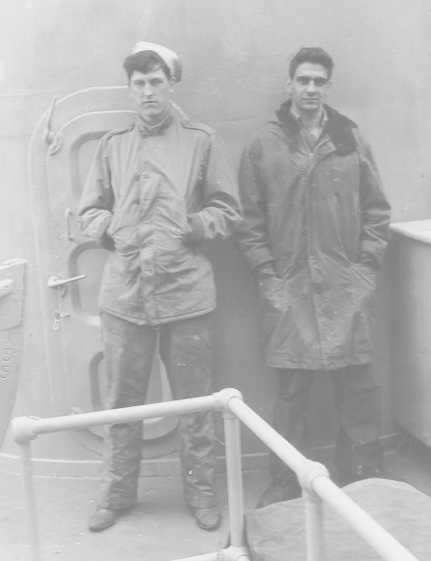
Climbing an almost destroyed ladder, Baldwin finally made it topside. Quickly donning a life preserver, he rushed forwards towards the bow but was not fast enough. As the aft end of the Escanaba was sucked under, the water enveloped Baldwin, and pulled him down with the ship.
Forced for a moment deep into the frigid water, he bobbed back, his life vest bringing him up. He swam towards a piece of wreckage and found four other men, including Seaman O’Malley.
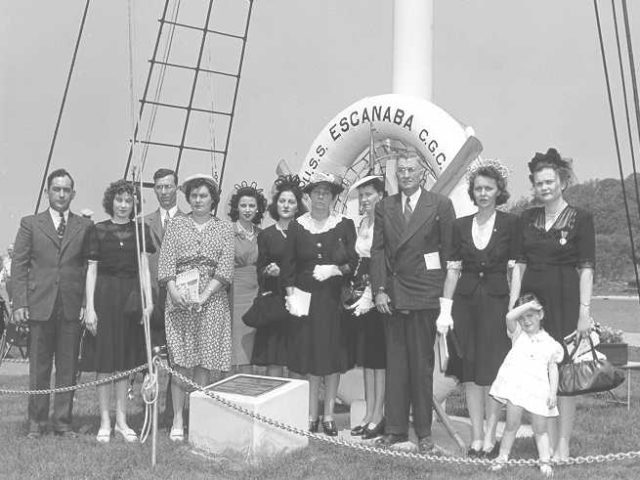
The Escanaba’s crew floated for only a matter of minutes, but already most of the men had fallen unconscious. When USCGC Raritan came to rescue them, they found the entire 103 complement dead, except two people. O’Malley and Baldwin were unconscious, but their clothing had frozen to the wreckage they clung to. This held them out of the water and prevented them from freezing to death.
To this day no one knows what sank the Escanaba, most theories say either a magazine explosion, a torpedo, or a lone mine, which had drifted into the convoy. Its loss stands as one of the worst in Coast Guard history, even more so because of the Cutter’s amazing life-saving history.
